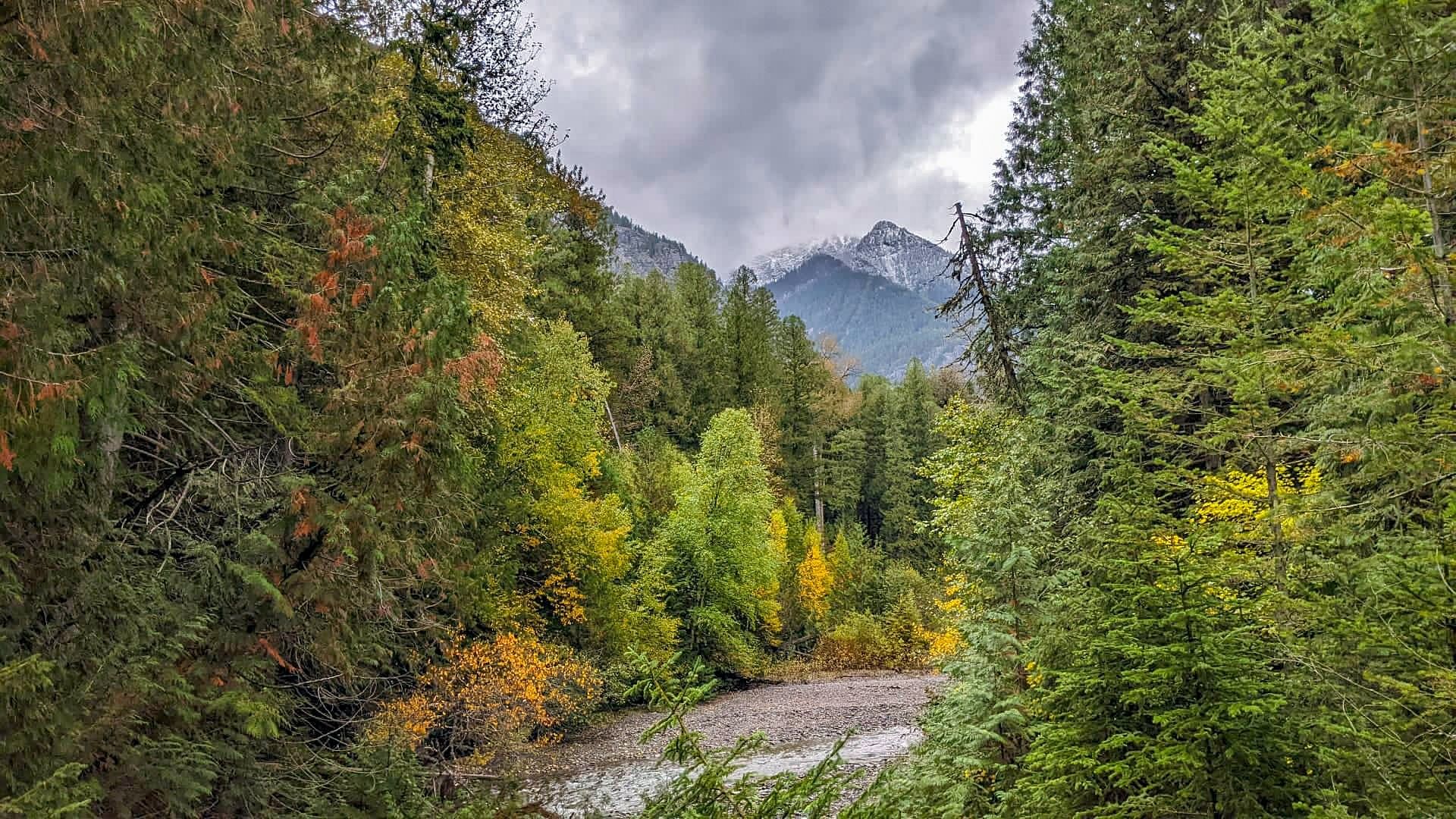
Snow-capped mountains in GNP.
Credit: R Mohan Babu
It was a 1950-km long journey in a double-decker Empire Builder train that took us from St Paul, Minnesota, to Whitefish in Montana. During the 25-hour journey, the train passed through Minnesota, North Dakota and vast stretches of Montana before we deboarded the train in biting cold in Whitefish Depot, which is over 95 years old and has some interesting and captivating sepia pictures.
The double-decker train operated by Amtrak between Seattle and Chicago has a viewing deck (similar to Indian Railways’ Vistadome coaches) that offers a memorable experience for travellers. It is a common sight as many convert the viewing deck into their workstation even as they enjoy the beautiful journey through prairies.
The Glacier National Park (GNP) is nestled in northwestern Montana on
the Canada-United States border. The GNP is a hiker’s paradise as it offers a
variety of options to the trekkers. Those with guts and grit and strong legs can take a 50-mile (81-km) trek on the Sun Road that provides some of the most amazing views in Montana.
Known by the sobriquet “Crown of the Continent”, the GNP has the unique
distinction of being designated in 1995 as the first International Peace Park in the International Peace Park World Heritage Site. Most mountains and important destinations have a tale or two or a folklore of their own. The indigenous people of the region, mainly Blackfeet Nation, hold that the GNP is home to spirits. Chief Mountain in the northeast corner of the GNP is widely revered as the home of powerful medicines. What makes them believe so?
The argument is its authority which is easy to recognise, given its unusual appearance. It stands in the prairie away from the rest of the mountains, like a warrior chief leading his tribe to the rising sun. Many native Americans trek their way on vision quests. The GNP, spread over 1,400 square km, is famous for its glacier-carved jagged peaks, turquoise and emerald lakes, abundant and diverse animal communities and U-shaped valleys. It is also home to grizzly bears, black bears, wolves, wolverines, mountain goats and mountain lions.
We drove down from Whitefish, a charming town and the nearest big place from the GNP, and the journey in itself was an enjoyable experience. As we sped on the well-asphalted roads, we were treated to spectacular lush green trees and fall colours all around. The nearly one-hour drive from Whitefish, known for its famous ski resorts, itself prepares you for a wonderful experience ahead.
The GNP has a well-laid-out plan — virtually fitting into the requirements of tourists with different expectations. We were greeted warmly by the staff manning the Information Centre and guiding the visitors according to their requirements. If the weather is foul, tourists are warned not to go beyond a particular point.
Even though the weather was gloomy with dark clouds over us and a steady drizzle, we were excited when the Information Centre told us that a mom bear was sighted the previous day with her two cubs at one of the lakes. “The chances are bright for you if there is a let up in the rain and the road is accessible,” we were told.
At the Information Centre, we could feel the fur of the grizzly bear. During our short trail at Cedar-Hemlock Forests, we had to strain our necks to see the top of the centuries-old trees as some of them were over 100 feet. A plaque in the trail area reads: “You are among the ancients here. Some of these trees were young when Peter the Great ruled Russia, Mozart dazzled the courts of Europe, Thomas Jefferson crafted the declaration of Independence, and Sacagawea helped guide Lewis and Clark to the Pacific, the United States fought its Civil War and the Wright Brothers took to the air above Kitty Hawk. “Throughout time the Kootenai and Salish people have revered this as a sacred place with special qualities, qualities that still remain for you to discover, as you walk, among these silent titans. What stories these trees could tell.”
We saw the spectacular Lake McDonald, the biggest one in the park, and had a glimpse of a couple of waterfalls as we drove around the park. As we headed to Eastern Glacier, we saw another interesting place — the Continental Divide. As we neared the Eastern Glacier, we kept our fingers crossed as it was still drizzling. We decided to take a chance and started driving towards the glacier.
Suddenly, it started snowing and in no time, the whole area turned milky white. All the trees were draped in snow and the road looked like a white carpet. We abandoned our plans to spot grizzly bears as there was no sign of the weather improving.
As we headed to Minneapolis, the train snaked its way through tunnels and railway bridges offering a memorable view of the snow-capped mountain peaks and beautiful landscape in the morning. As it was daytime, the chances of spotting some wildlife could not be ruled out but we could only see coyotes.
The occupancy in the train was rather poor, but the deck was full and many were standing and enjoying the journey for nearly two hours.
The expression and the words of one of the tourists on the train summed up
everything. With happiness writ large on his face, he told an American co-
passenger: “It was a wonderful experience in the GNP and I will have a blast alone in Chicago (the termination point of the train).”